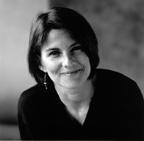To Reveal the Creator
Creativity is more than just being different. Anybody can play weird - that's easy. What's hard is to be as simple as Bach. Making the simple complicated is commonplace - making the complicated simple, awesomely simple - that's creativity.· Charles Mingus
Enhancing your creativity and thinking skills can and should be a lifelong journey. But what if want to get a quick start? Here are several suggestions based on my experience over the last few years.
Obtain an A4 (8 x 11 inch) notebook and use it for your journal. Each morning as soon as you get up, write three pages of anything. Typically you will write about what you did the day before, ideas, dreams, problems, and rambling thoughts. You may need to get up 30 minutes earlier to do the writing. More information: Read Julia Cameron's The Artists Way, and Dorothea Brande's Becoming a Writer.
The mind needs stimulation. Your sensory input gets stored in memory. By giving your mind fresh inputs each day, your memories get triggered and combined with the new input. Sometimes you will get ideas or gain new perspectives.
How do you get new input? Do something new each day. Listen to different radio stations, read or borrow different magazines, take a stroll through a shopping centre. Keep your eyes and ears open, and taste, touch and smell things. Don't forget to carry a notebook or micro-cassette recorder to record your ideas during the day.
In addition to the three pages you write in your morning journal, always carry a journal. I recommend the hardcover A5 size - either ruled pages or a Visual Diary (from an Art Supply Shop). Don't forget to carry a pen and/or pencil along with the journal. You may want to get one of those four colour in one ball-point pens made by Bic. Use your journal to record your thoughts, ideas, and observations during the day. Write in a creative quotation, affirmation or a technique to use this week. Make the journal your constant companion.
Write the technique on an index card or in your journal and carry it with you to practice wherever possible. Just like learning new words in a foreign language, you will need to practice the technique until it is second nature to you.
Where do you learn techniques? Some of them are described on my web site, Creativity Web, but you should buy a book like Michael Michalko's Thinkertoys, Arthur VanGundy's Brain Boosters for Business Advantage, Robert Alan Black's Broken Crayons or James Higgins' 101 Creative Problem Solving Techniques.
Listen to music on headphones while lying on the floor. Sit outside in the sunshine and do nothing. Take a stroll, ride your bike or go for a swim. It's important to give youself time to unwind and let your subconscious mind do its work. Getting ideas in the shower or while you are driving has almost become a cliche, but it is true.
Use Betty Edwards' book Drawing on the Right Side of the Brain to teach yourself to draw. It's a wonderful book and you will learn skills applicable to problem solving and enhancing your perception of the world. Other books to consider are Robert McKim's Experiences in Visual Thinking as well as the numerous books on cartooning, such as Robin Hall's The Cartoonist's Workbook.
A written list is not the best tool for planning, note taking or idea generation. Use Mind Mapping instead! Buy some coloured pens, large sheets of paper and a book by Tony Buzan or Nancy Margulies. Develop your own symbols, icons and visual vocabulary for your mind maps. Writing long hand is left brain, but mind maps use the right brain by employing colour and visual information. There are other books on the subject by Joyce Wycoff (USA) and Dilip Mukerjea (Singapore). Mind mapping works because of the next topic....
The mind stores information by association - a concept underlying the Ideafisher program, and the compilation of a thesaurus. Either can be used to generate ideas. Personal association can be a great start followed by a thesaurus. The inputs described in item number two (2) can trigger associations.
To demonstrate associational thinking, write the word HAPPINESS in the middle of a sheet of paper, and draw lines radiating out from the word. Write down your thoughts on what the concept of "happiness" means to you. Ask other people to do the same exercise and compare.
Take a new challenge each week. Work on a new problem each week, explore something new with the purpose of solving it, or generating ideas. Refer to Alan Black's Broken Crayons web site for his weekly challenge.
You can benefit by learning from the lives, ideas and actions of the great geniuses of history. Adopt a role model - maybe Leonardo da Vinci, Picasso, Einstein, T. S. Eliot, Thomas Edison, Hannibal (not Lecter!). Visit the Genius Gallery for more information.

- Charles Cave
About the Author
Charles Cave's contribution to Creativity is producing the Creativity Web, the first web site dedicated to creativity. Since its launch in 1994, the Creativity Web has provided information on creativity techniques, books, software, creativity practitioners and organizations, Mind MappingTM, and developing personal creativity. Charles' background is the world of software, having worked in the fields of application software development, technical support, pre-sales support, customer support and IT management. While working for a software vendor, he presented papers at industry conferences in Sydney and Melbourne. The author enjoys public speaking and gained his Competent Toastmasters Award in 1991. He is now a member of the Chatswood Early Risers Toastmasters Club. His passion is unleashing the power of the Brain, and its powers of creativity, thinking, memory and humour. Since first reading Tony Buzan's "Use Both Sides of your Head" in the late 1980's, Charles has pursued a self-directed program of learning brain skills.
· Albert Einstein The Creative Voice is infinitely more powerful than the Critical Voice. This statement is often hard for artists and other creatives to absorb, especially if Their Critic has been in the lead, either consciously or unconsciously. But our intuitive center is always urging us toward positive change and healthy new risk,
like a lighthouse beacon, calling us forward to new challenges and rewards. On the creative path, anxieties will coexist with the joys, to be sure. But when we are called, we best surrender, or experience far worse anxieties in the refusal. Many of us must listen more clearly to our Creative Voice, truly listen. Then we must trust it enough to act upon it. If we do act, our journeys will begin to unfold organically, and we will get closer to who we are, who we are meant to be. I attribute this unfolding to the notion that the Creative Voice is the true voice. Moreover, I designate the Critical Voice as a false voice. Fighting with it won't help. Trying to get rid of it won't help. That's because at its core, it contains something essential that we must recover. That is, it contains the power to assess, to review, to re-arrange, to improve. It was designed to be in support of the Creative Voice, before it "went wrong," In other words, the Critical Voice is the "Helpful Editor" in disguise. Contrary to the impulse to push it away, we need to embrace it, hear it, get underneath its bullying jabs. When we do, we recover its positive attributes and re-position it as a servant to the Creative Voice, its true role. This discovery is a joyful experience. Time and again, clients are amazed by the power of their Creative Voice, and delighted to discover it even plays a leading role in this transformation. - Barbara Bowen About the Author Barbara Bowen is a professional writer/photographer and founder of GATEWAYS, a transitional coaching for Arts Professionals. Her method is based in spirituality and inspired by Jungian psychology and mythological tradition. Ms. Bowen has extensive training in healing arts and dance therapy, and holds certification from the National Association of Poetry Therapy. She is affiliated with Union Theological Seminary, The Learning Annex, NY, and The Healing Arts Network at The Energy Center in Brooklyn, NY. You may contact the author by email to Bownarro@erols.com or by calling her at 718-596-8339.
Michael email: Michael@N-Spire.com
The purpose of all true art and science is to reveal the creator's design.
![]()
